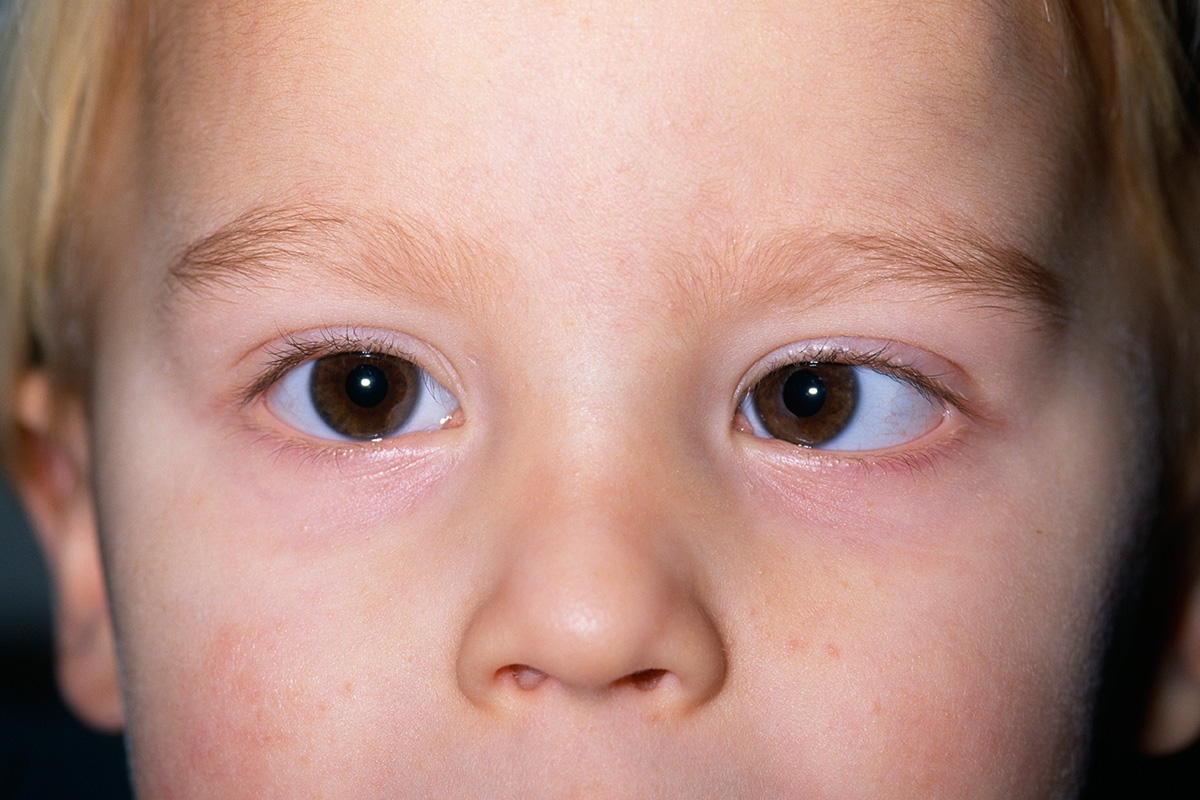Squint in Children can cause,
- Blurred Vision
- Lazy Eye – Reduced Vision
- Double Vision
- Reduced / Absent Depth perception and Stereopsis
- Cosmetic Blemish / Reduced Self Confidence and School Performance
Squint can arise due to multiple reasons like an incorrect balance of muscles, or uncorrected refractive error, childhood illness, nerve palsy, congenital problems, etc.
There are various types of squint seen in children. Most common being Inward deviation of eye in a child of around 6-8 months of age onwards, which is known as Congenital / Infantile Esotropia, where child might need glasses or more commonly surgery.

Children above the age of 2 years with esotropia (inward deviation) may be prescribed special glasses which will help to focus and straighten the eyes. Sometimes even Prisms, which are clear, wedge-shaped lens that bends (refracts) light rays, are used to help with focus.
There are other types of squint where eye deviates outwards (Exotropia) which can be intermittent or constant. Depending upon the type, refractive error and case demand, it can be treated with glasses, exercises or squint surgery as per the need.
Sometimes, to strengthen a misaligned eye, which is weaker than the other, Patching or blurring is recommended. In this, A Child is prevented from using a stronger eye by wearing an eye patch or using blurring eye drops. This is because it forces them to use the weaker eye, which in the run helps to strengthen it.
If glasses, prisms, patching or eye exercises do not help, surgery is recommended.
Into the surgery, a general anesthesia is given to the child to make them fully asleep. After that, the ophthalmologist makes a small cut in the tissue covering the eye to reach the eye muscles. The muscles are then repositioned to help the eyes point in the same direction. This surgery, as mentioned above, may or may not be needed to be done in both the eyes and sometimes few of the children might a second surgery to align their eyes.
Usually, it takes about 2-3 days before Children can get back to their daily routine.
Like every other surgery, Squint Correction Surgery also has its various techniques, each has its own benefits and risks. These are to be discussed by Ophthalmologist (Strabismologist) before the surgery with the child’s parents.
MYTH: Squint surgery is not safe in younger children! It can lead to complications and other permanent eye problems!
Fact: Squint surgery can be performed very safely in a child as young as 6 months of age! We take pride in performing successful squint surgeries in children with age of 6 month onwards!!
Neglecting or delaying surgery unnecessarily leads to permanent loss to vision and other functions.


